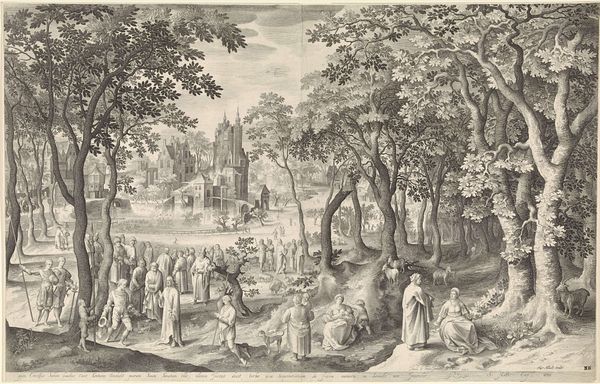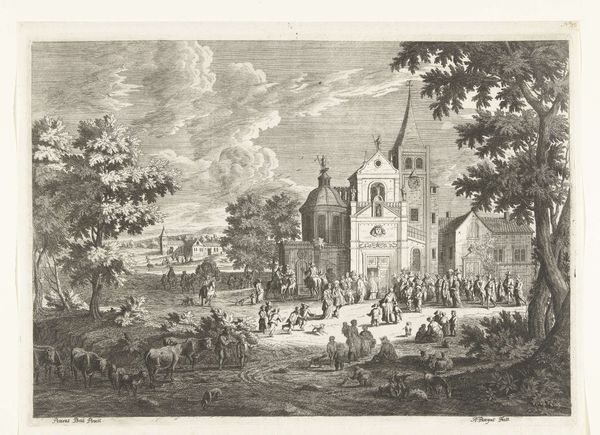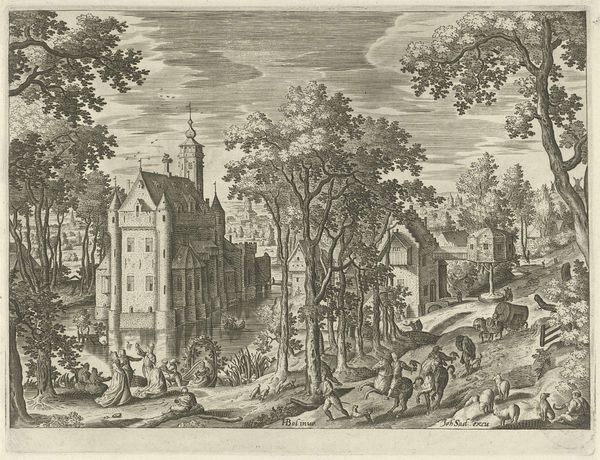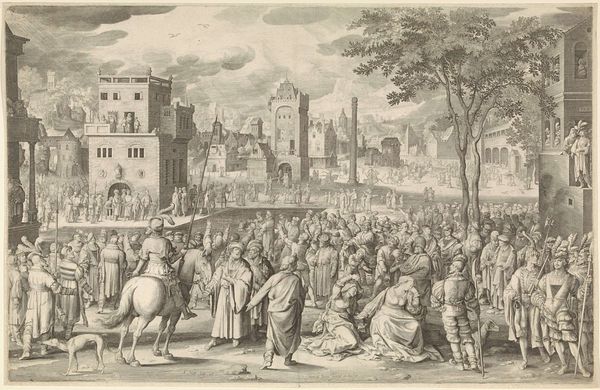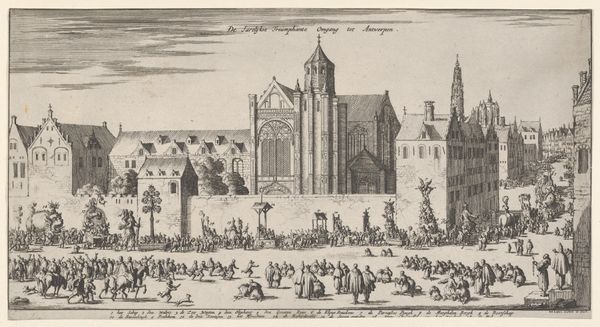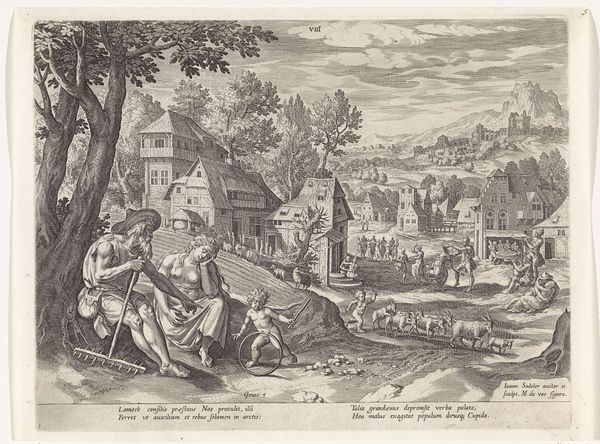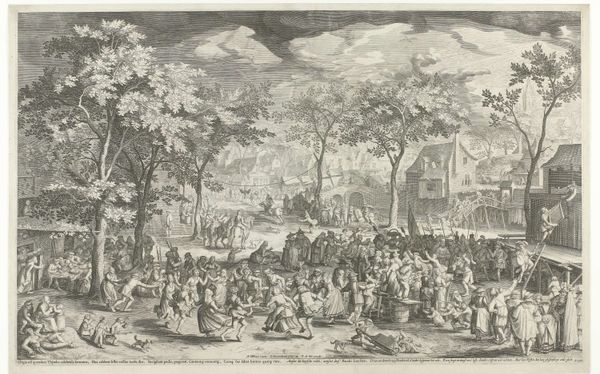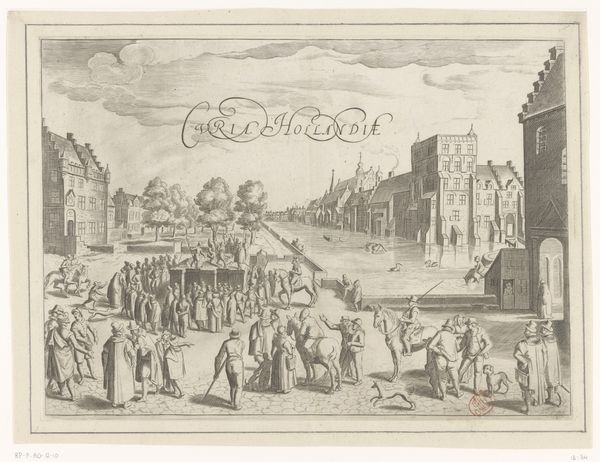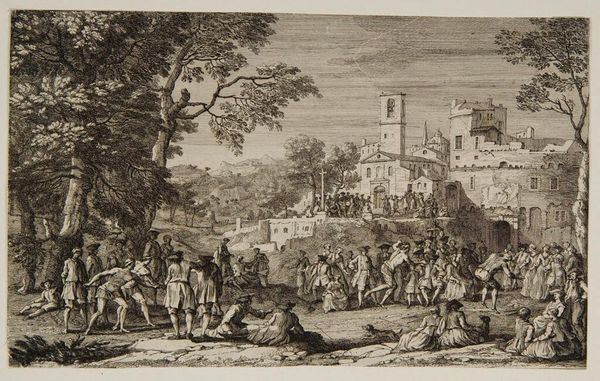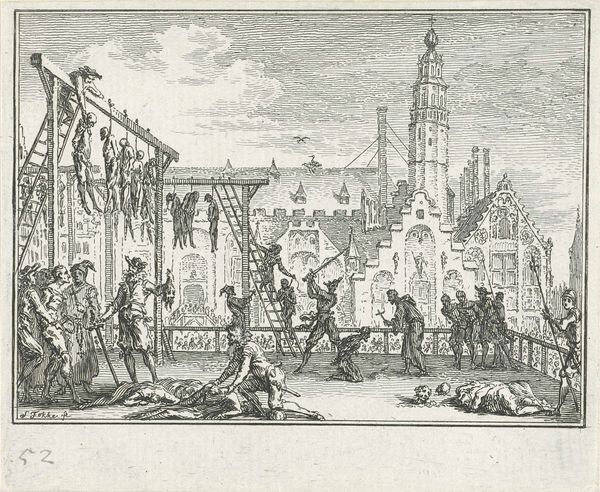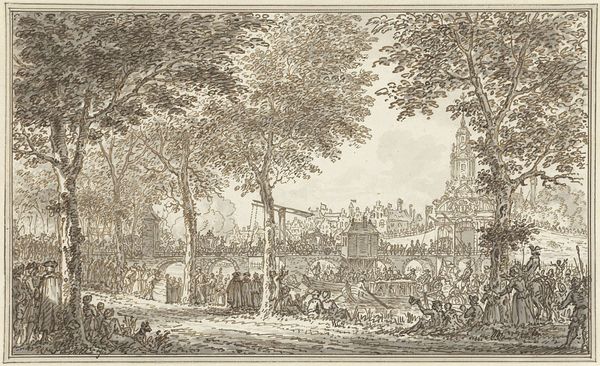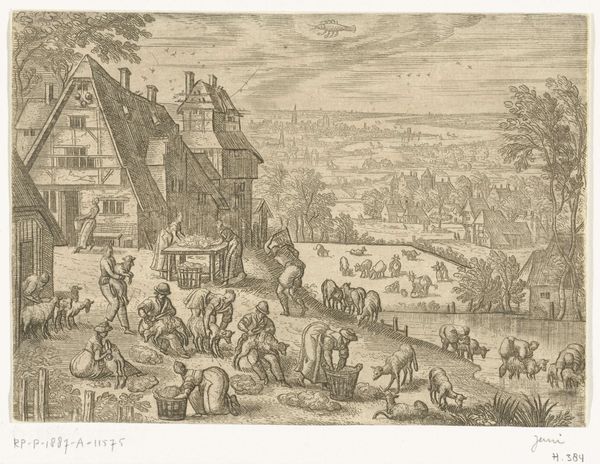
print, engraving
#
narrative-art
#
dutch-golden-age
# print
#
landscape
#
figuration
#
cityscape
#
genre-painting
#
engraving
Dimensions: width 701 mm, height 440 mm
Copyright: Rijks Museum: Open Domain
Editor: Here we have Nicolaes de Bruyn’s "Peasant Kermis," an engraving, probably made sometime between 1602 and 1665. It depicts what looks like a bustling festival in a Flemish town, brimming with people and activity. I’m really struck by how detailed it is; you can almost hear the music and chatter. What do you see in this piece from a historical perspective? Curator: It's tempting to romanticize these scenes, but engravings like this played a crucial role in shaping perceptions of peasant life for a burgeoning urban audience. The “Kermis,” or fair, wasn't just a celebration; it was a highly regulated public event, yet the image is often used to confirm the supposed disorderly conduct of peasants. Think about who was commissioning and consuming these prints. Editor: So, were they like a form of…propaganda? Curator: In a way, yes. Consider the artist's perspective. He's carefully constructed this image, highlighting specific aspects of peasant behavior—the dancing, drinking, and apparent revelry. We have to consider how printmakers like De Bruyn, catered to a market keen on confirming existing social hierarchies. To your point about the sound: imagine these scenes were noisy, even dangerous to the sensibilities of those accustomed to a more regulated city life. These engravings subtly reinforced that divide. Where does this context change how you see this work? Editor: It makes me a bit uneasy. The festive atmosphere feels almost…exploitative, now. I guess I was initially drawn into the apparent energy and the 'snapshot' of everyday life, but now I understand this can also reveal power dynamics. Curator: Precisely. It reminds us that art isn’t always a straightforward representation of reality; it's often a carefully constructed narrative, serving a particular purpose within its society. Considering the historical context transforms our reading experience. Editor: I'll definitely look at art depicting everyday people in a different way now. There's so much more to unpack than initially meets the eye!
Comments
rijksmuseum about 2 years ago
⋮
This is the largest and most spectacular print after a design by Vinckboons ever made. A bird’s eye view with scores of little figures affords a sample of everything that happens at such a fair. The crowd dances, gorges, fights, and gapes at the market stands and a farcical play. Elegantly clad city people observe the crowd with an air of slight disdain.
Join the conversation
Join millions of artists and users on Artera today and experience the ultimate creative platform.
